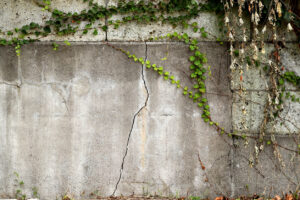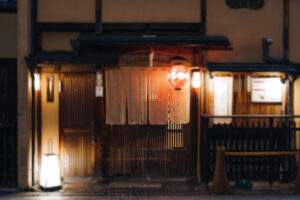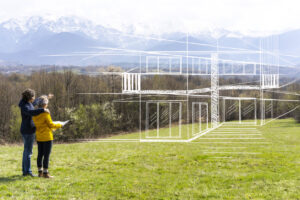Shikoku’s Appeal is Rapidly Rising! Complete Strategy Guide for Scenic Views, Gourmet Food & Hidden Paradises
“What does Shikoku have to offer?”
Many people might think this way.
But actually, Shikoku’s appeal is rapidly rising in 2025!
Beyond Sanuki udon and Dogo Onsen, there are the breathtaking views of Shikoku Karst, the secret valleys of Iya, and the islands of the Seto Inland Sea – it’s truly a treasure trove of hidden gems.
This article thoroughly explains the real attractions of all 4 prefectures from a local perspective. From hidden scenic spots to exquisite gourmet food and efficient touring methods, we deliver information that will ensure you never regret your Shikoku trip.
By the time you finish reading, you’ll surely want to start planning your Shikoku adventure.
Why is Shikoku’s Appeal Getting Attention Now?
Background of the 2025 Shikoku Boom and Foreign Tourist Evaluations
Did you know that Shikoku’s appeal is rapidly increasing?
While Shikoku has long been perceived as “a countryside with nothing to offer,” its evaluation has dramatically changed as of 2025.
Three Factors Behind the Shikoku Boom
- Changing Values of Inbound Tourism
- Shift from Golden Route to “authentic Japanese experiences”
- Post-COVID transformation in traveler consciousness
- Social Media Spread of Scenic Spots
- Shikoku Karst and Iya’s vine bridges gaining worldwide attention
- Recognition expansion among younger generations as “Instagram-worthy” destinations
- Increased Interest in Unique Regional Culture
- Appreciation for spiritual culture like Shikoku Pilgrimage and Awa Odori
- “Osettai” (hospitality) culture providing deep emotional impact to foreigners
| Category | 2019 | 2025 | Growth Rate |
| Foreign Tourist Numbers | Baseline | Approx. 1.6x | +60.9% |
| Social Media Posts | Baseline | Increasing Trend | (Specific figures unpublished) |
Real Voices from Foreign Tourists
- “A miraculous place where Japan’s original landscape remains intact” (German tourist)
- “The warm hospitality of local people changed my life” (French tourist)
- “Such beautiful coexistence of nature and culture is rare anywhere in the world” (American tourist)
Thus, Shikoku has undergone a magnificent transformation from “hidden secret territory” to “a sacred place the world admires”. Won’t you experience this historic moment yourself?
Complete Guide to Must-See Attractions in Shikoku’s 4 Prefectures
Kagawa Prefecture | Sanuki Udon Sacred Land and Setouchi Art Experience
While Kagawa Prefecture is famous as “Udon Prefecture,” its charm extends far beyond noodles. The art islands floating in the Seto Inland Sea and the garden beauty of Ritsurin Park, a special scenic beauty site dating from the Edo period, continue to captivate visitors.
Must-See Spots in Kagawa Prefecture
| Spot Name | Appeal Points | Time Required | Recommendation Level |
| Naoshima・Teshima | Fusion of contemporary art and nature | 1 day | ★★★★★ |
| Ritsurin Park | Beauty of special scenic designation | 2-3 hours | ★★★★☆ |
| Sanuki Udon Tour | Taste comparison of authentic flavors | Half day | ★★★★★ |
Naoshima’s art experience offers unforgettable emotions with Yayoi Kusama’s “Pumpkin” and Tadao Ando-designed Chichu Art Museum, combined with breathtaking views of the Seto Inland Sea.
Ehime Prefecture | Dogo Onsen and Citrus Kingdom Healing Journey
Dogo Onsen, with approximately 3,000 years of history, is also famous as the setting for Natsume Soseki’s “Botchan.” Ehime’s true charm lies in the “healing kingdom” woven by hot springs and citrus fruits.
Ehime Prefecture Experience Menu
- Dogo Onsen Honkan: Supreme bathing in a historically significant building designated as Important Cultural Property
- Matsuyama Castle: 360-degree panoramic views from one of Japan’s 12 original castles
- Mikan Picking Experience: Tasting Ehime oranges in one of Japan’s leading production areas
- Shimanami Kaido Cycling: Internationally acclaimed scenic cycling route
Particularly, Dogo Onsen’s “Kami-no-yu” is a prestigious hot spring used by the Imperial Family, where you can experience the origins of Japanese hot spring culture.
Kochi Prefecture | Sakamoto Ryoma and Natural Beauty of Shimanto River
Kochi Prefecture is filled with historical romance as the hometown of the late Edo period patriot Sakamoto Ryoma.
The rich nature nurtured by the Shimanto River, Japan’s last clear stream, will heal visitors’ hearts.
Kochi Prefecture Charm Experiences
- Meeting Ryoma Statue at Katsurahama: The statue of Ryoma gazing at the Pacific Ocean is a must-see
- Shimanto River Clear Stream Experience: Canoeing, houseboat rides, and scenic photography at submerged bridges
- Bold Tosa Cuisine: Bonito tataki and sawachi (traditional feast) dishes
Shimanto River’s water quality boasts Japan’s finest purity, and its transparency allowing views to the riverbed is truly moving.
Tokushima Prefecture | Awa Odori and Mystical Iya Experience
Known for the saying “Fools dance, fools watch, if you’re going to be a fool anyway, you might as well dance,” Tokushima Prefecture is the home of Awa Odori. Its true charm also lies in the mystical landscapes of “Iya,” one of Japan’s three great hidden valleys.
Tokushima Prefecture’s Mystical Spots
| Location | Experience Content | Mystique Level |
| Iya Vine Bridge | Suspension bridge woven from wild shirakuchi vines (14m high, 45m long) | ★★★★★ |
| Oboke・Koboke | Gorge beauty created by 200-million-year-old geological formations | ★★★★☆ |
| Naruto Whirlpools | World’s largest-scale whirlpools | ★★★★★ |
Iya Vine Bridge is a thrilling suspension bridge where historical romance of Heike clan refugee legends and the silence echoing through primeval forests heal modern hearts.
Additionally, Otsuka Museum of Art offers collections of world masterpieces reproduced on ceramic panels, providing uniquely Tokushima experiences where art and nature harmonize.
Shikoku Karst & Scenic Spots and Traditional Culture Attractions
Shikoku Karst’s Magnificent Landscapes and Photography Points
One of Japan’s three major karst formations, “Shikoku Karst” is a highland region spanning 1,000-1,500 meters above sea level across Ehime and Kochi prefectures. Its magnificent landscapes, also called “Japan’s Switzerland,” provide unforgettable emotional experiences.
Detailed Scenic Points of Shikoku Karst
| Spot Name | Elevation | Highlights | Best Time | Photography Tips |
| Tengu Plateau | 1,485m | 360-degree panoramic views | Sunrise・Sunset | Wide-angle lens essential |
| Godan Plateau | 1,400m | White limestone and green grasslands | Fresh green・Autumn foliage seasons | Use limestone as foreground |
| Himetsuru Plain | 1,300m | Cattle grazing scenes | Summer season | Telephoto close-ups of cattle |
| Onogahara | 1,400m | Sea of clouds and starry skies | Early morning・Night | Long exposure with tripod |
Four Seasons of Scenic Experiences
Spring (April-May): Paradise of Fresh Greenery
- Fantastic landscapes with mountain cherry blossoms and dogtooth violets
- Beautiful contrast between white limestone and fresh greenery
- Comfortable hiking with average temperatures of 10-15°C
Summer (June-August): Pastoral Highland Scenery
- Idyllic scenes of many cattle grazing
- Ideal as a summer resort with highland coolness
- Abundant alpine plants and grassland flowers
Autumn (September-November): Competition of Autumn Foliage and Sea of Clouds
- Silver world of pampas grass and autumn foliage gradations
- High probability of seeing sea of clouds in early morning
- Planetarium-like experience with full starry skies at night
Winter (December-March): Snow-covered Different World
- Pure white snowfields spreading like Hokkaido scenery
- Occasional views of frost-covered trees and ice formations
- Road closures common in winter – advance confirmation and warm clothing essential
Experiencing “Osettai” Spiritual Culture Through Shikoku Pilgrimage
Shikoku Pilgrimage is a 1,200-year-old pilgrimage culture rare in the world. The journey following the footsteps of Kobo Daishi (Kukai) through 88 sacred sites is gaining attention domestically and internationally as a “spiritual experience for life reflection” beyond mere tourism.
Deep Attractions of Shikoku Pilgrimage
1. Heartwarming Experiences of “Osettai” Culture
- Unconditional Goodwill: Local people freely provide food and drinks to pilgrims
- Spirit of “mutual help in times of need” inherited unbroken for 1,200 years
- Heart-to-heart communication beyond language barriers: Japanese culture that most moves foreign tourists
2. Diverse Attractions of 88 Sacred Sites
- Seaside Temples: Saimyoji Temple (24th) offers great Pacific panoramas
- Mountain Temples: Iwamotoji Temple (37th) overlooks Shimanto River
- Urban Temples: Zentsuji Temple (75th) pilgrimage to Kobo Daishi’s birthplace
- Different histories and benefits providing spiritual support
3. Healing Effects and Insights for Modern People
- Digital Detox: Time to face nature away from smartphones
- Walking Meditation Effects: Finding peace of mind through step-by-step walking
- Self-Acceptance Experience: Precious opportunity for deep self-reflection
Real Voices from Actual Participants
- “As I walked, daily worries seemed smaller, and what’s truly important became clear” (30s office worker)
- “The handmade rice balls from a local grandmother were the most delicious of my life” (German tourist)
- “When I finished walking all 88 sites, I was convinced my life had changed” (50s housewife)
Modern Pilgrimage Styles
- “Kugiri-uchi”: Completing the entire route in several segments (annual pace popular)
- “Gyaku-uchi”: Pilgrimage in reverse order from 88th to 1st (said to bring three times the benefits)
- “Car Pilgrimage”: Efficient visits by car (recommended for those with physical concerns)
Spirit and Heart of Shikoku People in Festival and Food Culture
Shikoku’s festival and food culture clearly reflects the bold and warm spirit of people living in this region. Particularly, each prefecture’s summer festivals demonstrate community solidarity and hearts that treasure tradition.
Soul-Stirring Festival Culture of Shikoku’s 4 Prefectures
| Prefecture | Festival Name | Features・Highlights | Participants | Dates |
| Tokushima | Awa Odori | “Dancing Fools” frenzy・400-year history | 1.3 million | August 12-15 |
| Kochi | Yosakoi Festival | Modern arrangements with continuous evolution | 1 million | August 9-12 |
| Ehime | Niihama Taiko Festival | Men’s souls clashing in bold displays | 500,000 | October 16-18 |
| Kagawa | Kotohira Grand Festival | 1,000-year tradition of beauty and dignity | 300,000 | October 9-11 |
Deep Meanings Embedded in Festivals
- Awa Odori: “Dancing fools and watching fools – if you’re going to be a fool, you might as well dance” spirit creates unity transcending status and position
- Yosakoi Festival: Fusion of tradition and innovation beloved by younger generations as evolving culture
- Niihama Taiko Festival: Hot bonds and pride of men carrying 1-ton drum floats with 50 people
Shikoku’s Bold Gourmet Culture
Kochi Prefecture: Bold Philosophy of Sawachi Cuisine
- Embodying Tosa spirit of “serve boldly, eat boldly“
- Sea bream sashimi, bonito tataki, and local sake gorgeously arranged on one plate
- Banquet Culture: Deepening bonds through “toast→return toast” drinking customs
Ehime Prefecture: Refined Gourmet Using Setouchi Bounty
- Tai-meshi: Pride of the region using natural red sea bream from Seto Inland Sea
- Mikan Hot Pot: Creative cuisine uniquely utilizing Ehime citrus
- Jakoten: Simple yet profound flavors using fresh small fish
Tokushima Prefecture: Brand Ingredients Born from Awa Tradition
- Awa-odori Chicken: Exquisite brand chicken called the “king of local chickens“
- Naruto Kintoki: Premium sweet potatoes acclaimed as “Japan’s sweetest“
- Awa Beef: National fans for its beautiful marbling
Kagawa Prefecture: Hidden Gourmet Beyond Udon Culture
- Bone-in Chicken: Famous dish with spicy seasoning perfect with beer
- Olive Beef: World’s first brand beef raised on olives
- Sanuki Three Livestock: Food kingdom with brand varieties of chicken, pork, and beef
These festival and food cultures are treasures uniquely Shikoku, fusing hospitality spirit with regional pride. Visitors can experience being welcomed not merely as tourists, but as warm family members.
Shikoku’s scenic beauty and traditional culture are precious assets teaching modern people about true richness and human connections that we tend to forget.
Hidden Spots and Travel Tips from Locals
3 Scenic Points Not Found in Tourist Guides
Let us introduce “the real Shikoku” known only to locals. These are truly secret scenic spots worthy of being called hidden paradises not often featured in tourist guidebooks, where you can create your own special memories.
| Spot Name | Location | Hidden Charm | Access Difficulty |
| Shodoshima・Kankakei Back Trail Viewpoint | Kagawa Pref. | Scenic viewpoint with few tourists | ★★☆ |
| Shimanto River・Sada Submerged Bridge at Dawn | Kochi Pref. | Mystical scenery wrapped in morning mist | ★★★ |
| Ishizuchi Mountains・Omogo Valley Falls and Clear Stream | Ehime Pref. | Emerald green streams and waterfalls | ★★★★ |
- Shodoshima Kankakei Back Trail Viewpoint offers breathtaking views overlooking islands floating in the Seto Inland Sea. It’s a quiet place without tour buses where you can enjoy photography in private spaces.
- Sada Submerged Bridge at Dawn is a living bridge used by locals, offering mystical scenery wrapped in morning mist.
- Omogo Valley Falls and Clear Stream features beautiful emerald green transparent rivers and multiple waterfalls – it’s streams and valleys, not hot springs.
Efficient Touring Routes and Seasonal Best Timing
Recommended Touring Patterns
- 2 Nights 3 Days Course (Beginner-friendly)
- Day 1: Takamatsu→Naoshima→Dogo Onsen (Art + Hot Springs)
- Day 2: Matsuyama→Shikoku Karst→Kochi (Scenery + History)
- Day 3: Katsurahama→Iya→Tokushima (Nature + Hidden Valley)
- 3 Nights 4 Days Course (Full Experience)
- One day per prefecture + half-day pilgrimage experience
Seasonal Best Timing
| Season | Recommendation Level | Highlights | Precautions |
| Spring (March-May) | ★★★★☆ | Cherry blossoms・Fresh greenery・Shikoku Karst flowers | Holidays can be crowded |
| Summer (June-August) | ★★★★★ | Festival season・Beach activities | Heat countermeasures essential |
| Autumn (September-November) | ★★★★★ | Autumn foliage・Abundant seasonal ingredients | Peak season |
| Winter (December-February) | ★★★☆☆ | Hot springs・Clear air | Snow caution in mountain areas |
By utilizing this information known only to locals, you should be able to have special Shikoku experiences different from other tourists. Discover Shikoku’s “true charm” for yourself!
Summary | Next Steps to Maximize Enjoyment of Shikoku’s Charm
Shikoku is no longer “a countryside with nothing to offer.” It has been reborn as Japan’s last hidden paradise, attracting worldwide attention for its complete package of scenery, culture, gourmet food, and spirituality. From Sanuki udon to the healing of Dogo Onsen, traces of Sakamoto Ryoma, and the fervor of Awa Odori, deep attractions are packed in that cannot be fully experienced in a single trip.
Particularly noteworthy is the “Osettai” culture of Shikoku Pilgrimage. The warm hospitality of local people deeply heals visitors’ hearts, providing life-changing experiences. The magnificent nature of Shikoku Karst and mystical scenery of Iya teach us about the “true richness” that modern people tend to forget.
This moment in 2025 is the perfect chance to experience “authentic Shikoku” before it becomes crowded. Take one step forward, and moving encounters that will color your life are surely waiting.
Now, let’s depart on a journey to witness Shikoku’s true charm with your own eyes!



